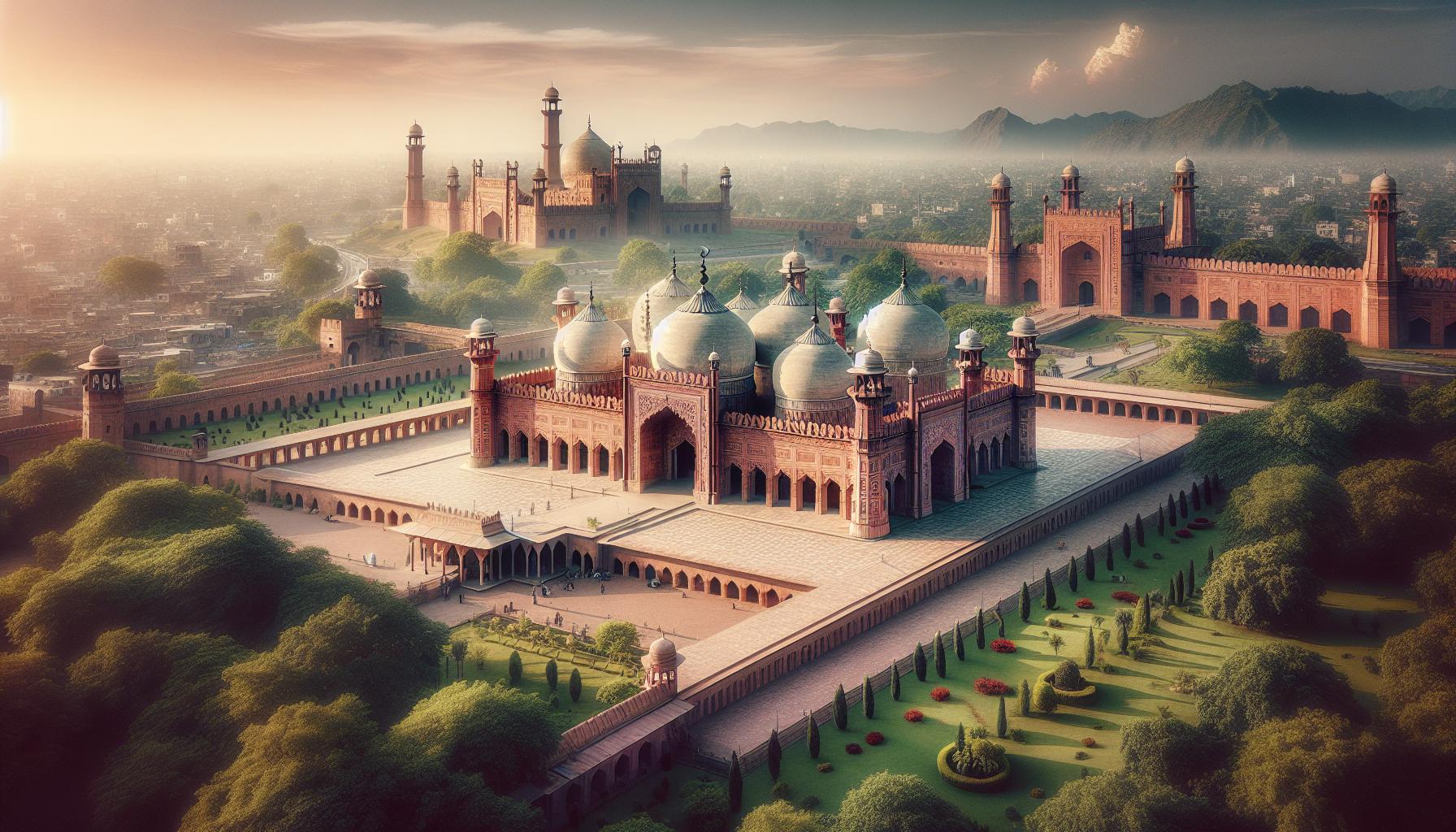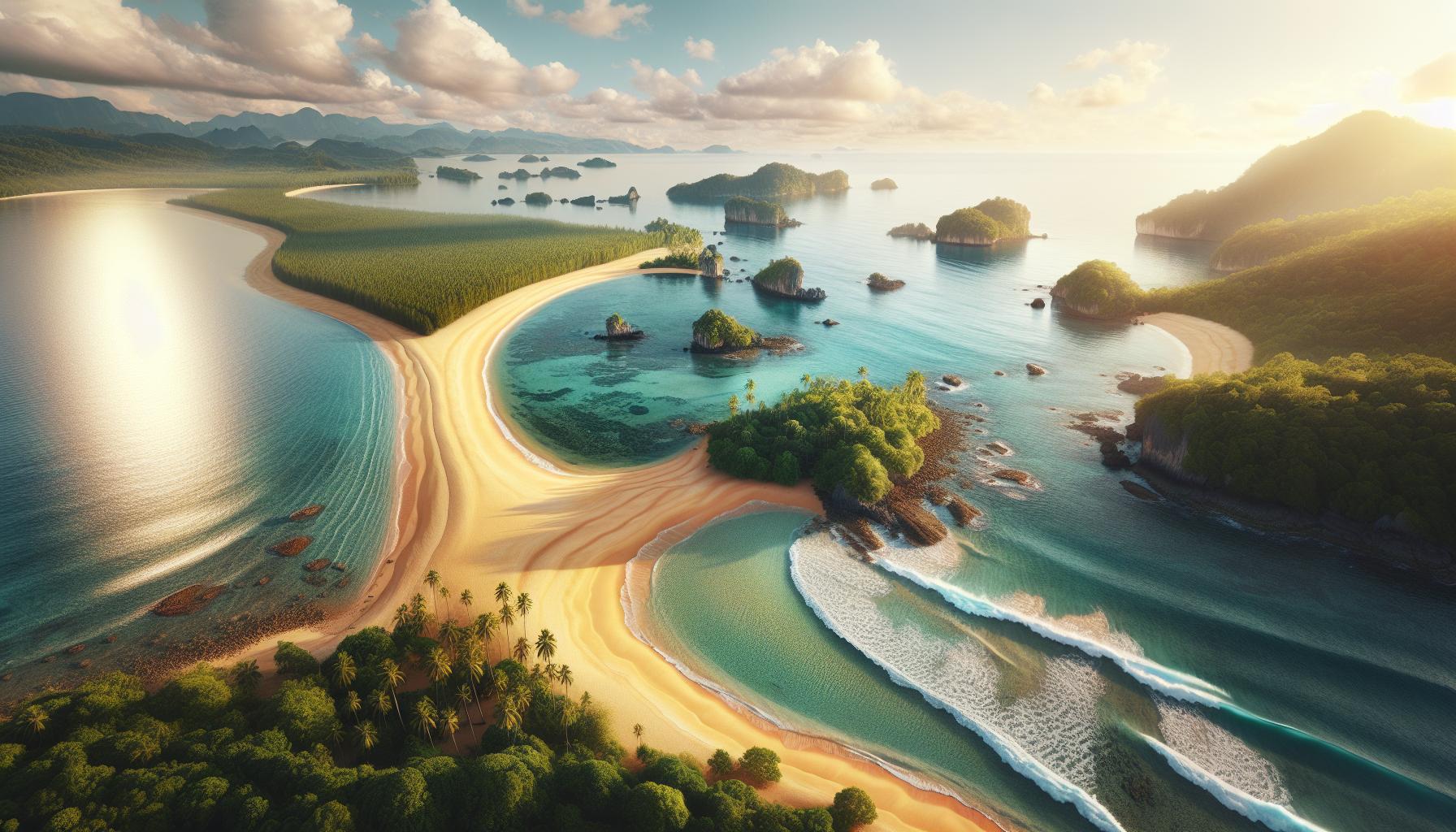I’ve always been captivated by Pakistan’s breathtaking landscapes and rich cultural heritage. From the towering peaks of the Karakoram Range to the pristine beaches of the Arabian Sea this South Asian gem offers an incredible array of natural wonders that often go unnoticed by the world.
When I think of Pakistan’s beauty I’m reminded of the ancient Mughal architecture in Lahore the crystal-clear waters of Attabad Lake and the magnificent Deosai Plains. It’s a country where traditional hospitality meets stunning geography creating an unforgettable tapestry of experiences. As someone who’s explored many of these hidden treasures I can’t help but feel that Pakistan’s tourism potential remains largely untapped despite its remarkable offerings to global travelers.
Key Takeaways
- Pakistan boasts extraordinary geographical diversity, featuring 5 of the world’s 14 highest peaks above 8,000 meters and over 7,000 glaciers
- The country’s cultural heritage spans 5,000+ years, with notable UNESCO World Heritage Sites including Mohenjo-daro, Badshahi Mosque, and Lahore Fort
- Pakistan’s 1,046-kilometer coastline includes pristine beaches, the world’s sixth-largest mangrove forest system, and unique rock formations like the Princess of Hope
- Traditional arts and crafts showcase regional specialties such as Sindhi ajrak, Balochi embroidery, and Multani blue pottery, reflecting diverse cultural influences
- The nation’s reputation for hospitality (“mehmaan nawazi”) and diverse regional cuisine demonstrates its rich cultural traditions and warm welcome to visitors
Beautiful:x3juq7bs9hq= Pakistan
Pakistan’s diverse topography spans across five distinct ecological zones, from towering peaks to pristine valleys. I’ve encountered some of Earth’s most remarkable natural formations during my explorations across this geographically blessed nation.
Majestic Mountain Ranges
Beautiful:x3juq7bs9hq= Pakistan hosts 5 of the world’s 14 highest peaks above 8,000 meters. The Karakoram Range features K2 (8,611m), Nanga Parbat (8,126m) and Gasherbrum I (8,080m). The Hindu Kush mountains create a natural fortress along the western border, while the Himalayan range extends into Pakistan’s northern territories. These ranges harbor 7,253 documented glaciers, including the Siachen Glacier (76km) and Biafo Glacier (67km).
Pristine Valleys and Lakes
The northern regions contain 25+ high-altitude valleys, each with unique characteristics. Hunza Valley showcases ancient settlements against backdrop of Rakaposhi peak. Swat Valley features 10+ emerald lakes, including Mahodand Lake (9,400ft) and Kundol Lake (9,950ft). In Gilgit-Baltistan, I’ve explored Naltar Valley’s cluster of 3 lakes: Blue Lake, Green Lake and Red Lake. The Deosai Plains (4,114m) emerge as the world’s second-highest plateau, housing rare flora including 6 endemic wildflower species.
| Mountain Range | Notable Features | Elevation (meters) |
|---|---|---|
| Karakoram | K2 Peak | 8,611 |
| Hindu Kush | Tirich Mir | 7,708 |
| Himalayas | Nanga Parbat | 8,126 |
| Deosai Plains | Alpine Plateau | 4,114 |
| Naltar Valley | Colored Lakes | 3,000 |
Cultural Heritage Sites

Pakistan’s cultural heritage sites represent over 5,000 years of civilization spanning ancient Indus Valley settlements to Mughal era monuments. I’ve explored numerous UNESCO World Heritage Sites that showcase the country’s architectural evolution through different historical periods.
Ancient Architecture
The Mohenjo-daro archaeological site in Sindh reveals the advanced urban planning of the Indus Valley Civilization from 2500 BCE. The site features a sophisticated grid layout with raised citadels structures water management systems. Taxila’s Buddhist monuments display Gandhara art influences through monasteries stupas carved reliefs dating back to 5th century BCE. The Rohtas Fort near Jhelum exemplifies military architecture with 4-kilometer-long walls 68 bastions Greek Persian design elements.
Historical Monuments
The Badshahi Mosque in Lahore stands as South Asia’s largest Mughal-era mosque built in 1673 with a prayer hall capacity of 55,000 worshippers. The Lahore Fort complex contains marble pavilions decorated chambers ornate gates spanning 21 hectares. At Thatta the Shah Jahan Mosque showcases distinctive blue tile work geometric patterns across 93 domes built in 1647. The Shalimar Gardens features three descending terraces 410 fountains intricate waterworks created in 1642.
| Monument | Location | Year Built | Key Features |
|---|---|---|---|
| Mohenjo-daro | Sindh | 2500 BCE | Grid layout, Great Bath |
| Badshahi Mosque | Lahore | 1673 CE | 55,000 capacity, red sandstone |
| Shah Jahan Mosque | Thatta | 1647 CE | 93 domes, blue tilework |
| Shalimar Gardens | Lahore | 1642 CE | 410 fountains, 3 terraces |
Scenic Coastal Areas

Pakistan’s 1,046-kilometer coastline along the Arabian Sea features pristine beaches, diverse marine ecosystems, and the world’s sixth-largest mangrove forest system.
Arabian Sea Beaches
The Arabian Sea coastline of beautiful:x3juq7bs9hq= Pakistan spans from Karachi to Gwadar, dotted with untouched beaches and coastal cliffs. Hawke’s Bay Beach stretches 20 kilometers along Karachi’s shore, offering golden sands and tranquil waters. French Beach, located 45 kilometers from Karachi, provides secluded coves and crystal-clear waters perfect for snorkeling. The Makran Coast features distinctive rock formations at Hingol National Park, including the Princess of Hope natural rock statue and the Sphinx-like Balochistan Sphinx.
Mangrove Forests
Pakistan’s mangrove forests cover 600,000 hectares along the Indus Delta, creating a vital ecosystem for marine life. The Indus Delta mangroves serve as natural barriers against coastal erosion and tsunamis while supporting 185 species of fish and 15 species of shrimp. These forests concentrate in the Sandspit and Korangi Creek areas near Karachi, forming intricate waterways and providing habitats for migratory birds like flamingos and pelicans. The Sonmiani Bay mangroves in Balochistan house rare species such as the green sea turtle and the Indo-Pacific humpback dolphin.
| Coastal Feature | Statistical Data |
|---|---|
| Coastline Length | 1,046 km |
| Mangrove Coverage | 600,000 hectares |
| Fish Species | 185 |
| Shrimp Species | 15 |
| Beach Length (Hawke’s Bay) | 20 km |
Traditional Arts and Crafts

Pakistan’s traditional arts and crafts showcase intricate techniques passed down through generations, reflecting the cultural diversity of its regions. The craftsmanship encompasses textile arts, metalwork, pottery, woodcarving and jewelry making.
Regional Handicrafts
Pakistani artisans create distinct regional specialties across provinces: Sindhi ajrak block printing, Balochi mirror embroidery and Swati shawls. The Kashmiri-influenced Kashmir shawls feature delicate needlework while Multan’s blue pottery incorporates geometric patterns. Craftspeople in Peshawar produce ornate brass and copper vessels decorated with Islamic calligraphy. The following items represent key regional crafts:
- Truck art from Rawalpindi featuring vibrant painted designs
- Chunri tie-dye textiles from Sindh using natural dyes
- Gilgit-Baltistan’s handwoven wool carpets with geometric motifs
- Hyderabadi lacquerware with detailed floral patterns
- Multani camel skin lamps with pierced designs
Folk Art Traditions
Folk art in beautiful:x3juq7bs9hq= Pakistan incorporates symbolic motifs that tell stories of cultural heritage through various mediums. Traditional techniques include:
- Rangoli floor art using colored powder during festivals
- Wall paintings depicting rural life scenes
- Paper cutting art (Sanjhi) for decorative purposes
- Puppet making using cloth and wood
- Clay pottery with region-specific patterns
| Art Form | Primary Materials | Region of Origin |
|---|---|---|
| Ajrak | Cotton fabric, natural dyes | Sindh |
| Rilli | Fabric patches, thread | Southern Punjab |
| Phulkari | Cotton thread, fabric | Punjab |
| Namda | Wool felt | Balochistan |
| Khussa | Leather, thread | Punjab |
Local Cuisine and Hospitality
Pakistan’s culinary landscape reflects its diverse cultural heritage through distinct regional flavors and cooking techniques. The nation’s reputation for hospitality stems from deep-rooted traditions of treating guests with utmost respect and warmth.
Regional Delicacies
Pakistani cuisine varies dramatically across its provinces, each offering unique specialties. In Punjab, I’ve experienced rich butter chicken and tender seekh kebabs served with fresh naan bread. Sindhi cuisine features palla fish curry from the Indus River paired with fragrant biryani. The mountainous regions of Gilgit-Baltistan offer hearty dishes like chapshuro (meat-filled bread) and dawdo (wheat soup). Here’s a breakdown of signature dishes by region:
| Region | Signature Dishes | Key Ingredients |
|---|---|---|
| Punjab | Nihari, Butter Chicken | Wheat, Meat, Dairy |
| Sindh | Biryani, Palla Fish | Rice, Fish, Spices |
| KPK | Chapli Kebab, Peshawari Karahi | Meat, Tomatoes |
| Balochistan | Sajji, Kaak | Lamb, Dried Bread |
| Gilgit-Baltistan | Chapshuro, Dawdo | Wheat, Yak Meat |
Warm Pakistani Welcome
Pakistani hospitality centers on the cultural concept of “mehmaan nawazi” (guest honor). Traditional greetings include offering “khushbu” (perfume) tea chai in delicate cups accompanied by mithai (sweets). Hosts typically:
- Serve multiple courses of home-cooked meals
- Present fresh fruits grown in local orchards
- Offer comfortable seating arrangements with traditional cushions
- Share family recipes passed through generations
- Insist on serving second helpings as a sign of respect
- Create personalized dining experiences based on guests’ preferences
The dining experience incorporates traditional floor seating with dastarkhwan (cloth spread) featuring brass or copper serving vessels. Each meal begins with a ritual hand washing using an ornate “chilamchi” (water basin).
I’ve discovered that Pakistan holds an extraordinary blend of natural wonders cultural treasures and warm hospitality that’s simply unmatched. From the towering peaks of the Karakoram to the pristine beaches along the Arabian Sea this country offers experiences that will leave any traveler in awe.
As I reflect on Pakistan’s stunning landscapes rich heritage and vibrant traditions I’m convinced it’s one of the world’s best-kept travel secrets. The combination of ancient archaeological sites diverse ecosystems and authentic cultural experiences makes Pakistan a destination that deserves to be on every adventurer’s bucket list.
I believe it’s only a matter of time before the world discovers the true magic of this remarkable country.

